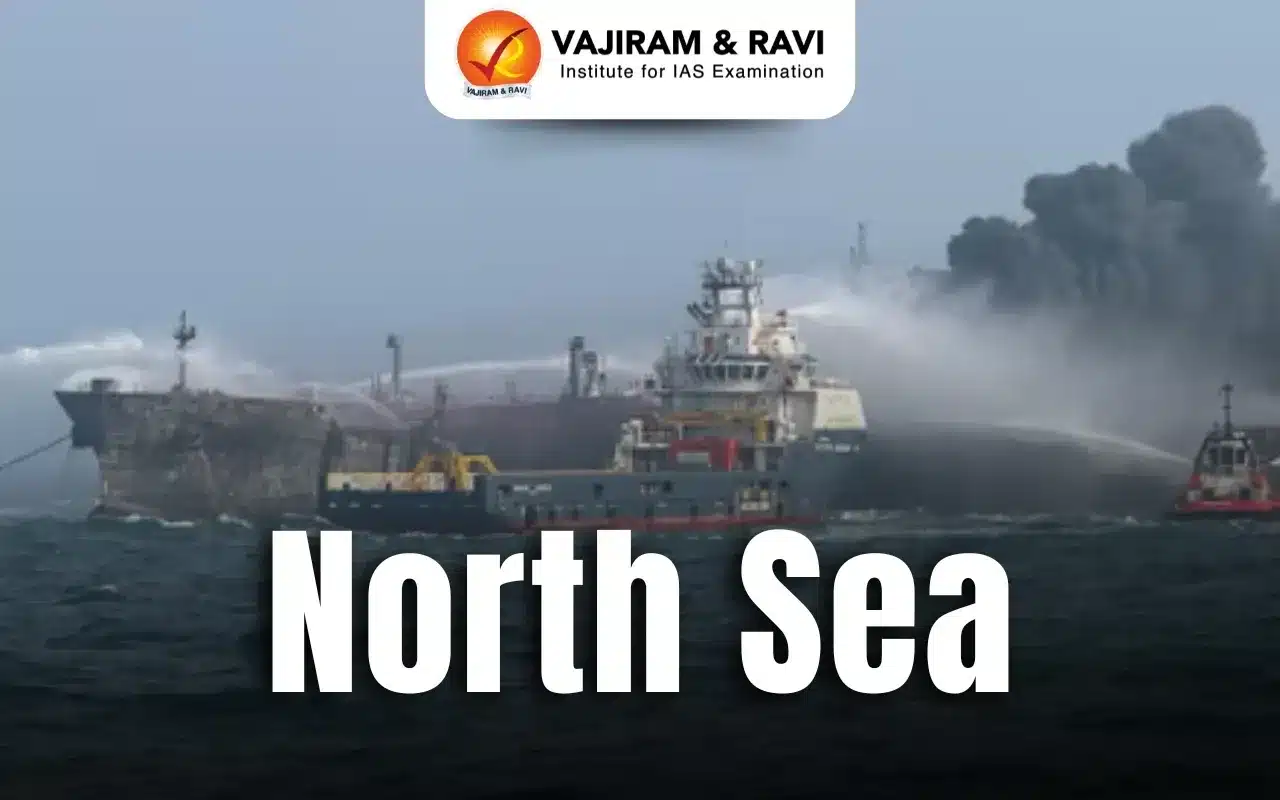North Sea Latest News
Recently, a cargo ship hit a tanker carrying jet fuel for the American military off eastern England, setting both vessels on fire and sending fuel pouring into the North Sea.
About North Sea
- Location: The North Sea is a shallow northeastern arm of the Atlantic Ocean, covering 220,000 square miles (570,000 square km) between the British Isles and northwestern Europe.
- Borders and Connections:
- Bordered by Great Britain (southwest and west), Orkney and Shetland islands (northwest), Norway (northeast), Denmark (east), Germany and the Netherlands (southeast), and Belgium and France (south).
- Connected to the Atlantic Ocean through the Strait of Dover and the English Channel.
- The Skagerrak links the North Sea to the Baltic Sea via the Kattegat and the Danish straits.
- Rivers: Major rivers that drain into the North Sea include the Forth, Elbe, the Weser, the Ems, the Rhine and Meuse, the Scheldt, the Thames, and the Humber.
- Economic Importance:
- It is one of Europe’s most productive fisheries.
- Major shipping zone for trade among European countries and between Europe and the Middle East.
- Contains significant reserves of petroleum and natural gas beneath the seafloor.
North Sea FAQs
Q1. What is the North Sea famous for?
Ans. The North Sea is famous for its rich fisheries, shipping routes, and significant petroleum and natural gas reserves.
Q2. Why is the North Sea so dang?
Ans. The North Sea is considered dangerous due to its rough weather, strong tides, and unpredictable currents.
Q3. Is the North Sea deep?
Ans. No, the North Sea is relatively shallow, with an average depth of about 95 meters (310 feet).
Q4. Which country has North Sea?
Ans. The North Sea borders the UK, Norway, Denmark, Germany, the Netherlands, Belgium, and France.
Source: TH
Last updated on June, 2025
→ UPSC Notification 2025 was released on 22nd January 2025.
→ UPSC Prelims Result 2025 is out now for the CSE held on 25 May 2025.
→ UPSC Prelims Question Paper 2025 and Unofficial Prelims Answer Key 2025 are available now.
→ UPSC Calendar 2026 is released on 15th May, 2025.
→ The UPSC Vacancy 2025 were released 1129, out of which 979 were for UPSC CSE and remaining 150 are for UPSC IFoS.
→ UPSC Mains 2025 will be conducted on 22nd August 2025.
→ UPSC Prelims 2026 will be conducted on 24th May, 2026 & UPSC Mains 2026 will be conducted on 21st August 2026.
→ The UPSC Selection Process is of 3 stages-Prelims, Mains and Interview.
→ UPSC Result 2024 is released with latest UPSC Marksheet 2024. Check Now!
→ UPSC Toppers List 2024 is released now. Shakti Dubey is UPSC AIR 1 2024 Topper.
→ Also check Best IAS Coaching in Delhi
























